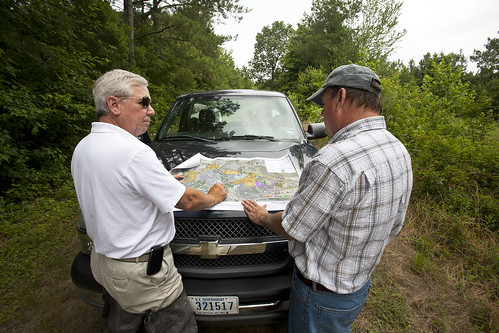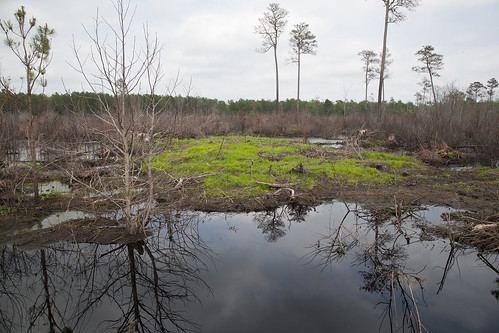
Kirby Wells knew that if he wanted future generations of Wellses to enjoy the family’s land on Maryland’s lower Eastern Shore, something had to change.
The 1,700 acres Wells’ grandfather had purchased in 1941, then drained and planted with loblolly pines was rapidly losing value. In 2006, the family’s sawmill business closed due to the decline of the housing market, and the pressure to sell to developers was on.
Searching for a way to keep their property in the Wells Family Ltd. Partnership, Kirby Wells and his brothers learned that USDA’s Natural Resources Conservation Service (NRCS), through its Wetlands Reserve Program (WRP), offered financial and technical assistance to remove their marginal land from production, restore it to a functioning wetland and protect it from future development.
WRP is best suited for agricultural land that is frequently flooded, like the Wells’. Landowners enrolled in the program retain the title to the land, the right to control access and recreational use, and still pay taxes on their property.
Wetlands provide habitat for fish and wildlife, including threatened and endangered species. Wetlands also improve water quality by filtering out sediments and chemicals, reduce flooding, recharge groundwater and protect biological diversity.
Restoration began in 2010 when the Wellses harvested 205 acres of middle-aged (20-year-old) pine for wood chips. The monoculture of pines was replaced with a variety of native trees and shrubs that provide habitat for a wide diversity of species such as pileated woodpeckers, black and white warblers and wild turkey.
The return of these creatures is a welcome sight for the Wells family. “Our purpose for this particular property is to use it for recreation purposes such as hunting and observation of non-game wildlife,” Kirby Wells said.

Using the latest wetlands restoration science, a plan was developed to plug the network of ditches originally installed to drain the land for agricultural purposes.
Seventy-five plugs were strategically placed in ditches to allow surface water to flow more naturally over the land. Runoff from snow melt and heavy rain now drains slowly through the restored wetlands, giving time for plants to naturally absorb nutrients and the sediment to drop out before the water joins Kings Creek and flows to the Manokin River.
The Wells have been pleased with the program, and have enrolled an additional 700-acre parcel in WRP. “My parents and grandparents would be very happy we found a way to keep this land in the family,” Kirby said. “We’ve cut enough trees in our life; it will be interesting to see something continue to grow forever.”
Find out more about the Wetlands Reserve Program.
Follow NRCS on Twitter.
Check out other conservation-related stories on the USDA blog.
